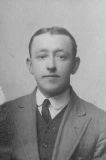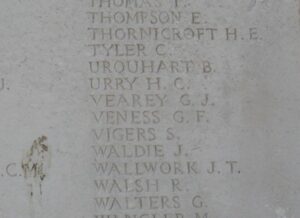Llangynfelyn is situated on the River Dyfi, nine miles north of Aberystwyth on the A487 road to Machynlleth. The Parish was a rich mining area, with several lead and copper mines in the vicinity, the spoils of which were exported from the Dyfi Estuary. The Parish Church, dedicated to St. Cynvelyn, was originally erected in the sixth century, and within the Church was the Parish War Memorial, to the men of Llangynfelyn who served (and fell) during the Great War. This memorial has just been moved to Llanfach, the village hall in Taliesin, and a service of re-dedication was held on 9 November 2014. Llangynfelyn School contains a wooden war memorial, which has the same names as the main war memorial for the village. This page commemorates the men named on the School memorial, which commemorates all of the former pupils of the school who served in the Great War.
The Great War, 1914-1918
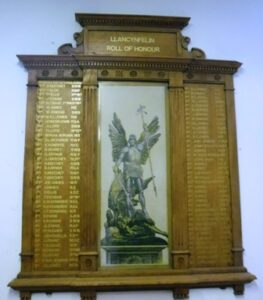
Peter Beechey, Private, 29568, South Wales Borderers. Peter was born at Llangynfelyn in 1896, probably the son of Lewis and Hannah Beechey. He enlisted at Brecon into the 10th Battalion, South Wales Borderers, which was attached to 115 Brigade, 38th (Welsh) Division. Peter joined the battalion in 1916, probably as one of a number of reinforcements to the battalion after it had taken part in the capture of Mametz Wood, and moved to Ypres, where the Division took up the front line along the canal bank at Boesinghe. Here they fought at the Battle of Pilckem Ridge, and the Battle of Langemarck. They then moved to Armentieres, where they remained from September 1917 until March, 1918 when the German Spring Offensive was launched. The British had been over-run on the Somme, and so in April the Division was moved South, taking up positions North of Albert, from where they weathered the storm of the coming months, until the war turned during the Battle of Amiens, on 8 August, 1918. The Germans had now lost the upper hand, and the British regained the lost ground on the Somme after an attack which began on 21 August, with the 38th Welsh in the midst of the attack during the Battle of Albert, and then moving east, where they fought at the Battle of Bapaume. Peter was wounded during the advance across the old Somme battlefields. He died of his wounds on 28 August 1918, aged 22, and is buried at Fienvillers British Cemetery, France.
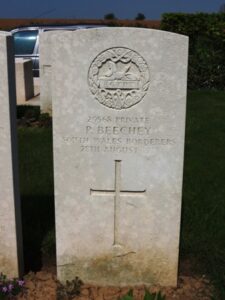
Richard Ellis, Private, 36427, King’s Liverpool Regiment. Richard was born at Birmingham in 1886, the son of William and Jane Ellis. The family had resided at Birmingham for several years prior to Tom’s birth, but by 1914 were back at their native Taliesin. Richard resided with his wife, Margaret Ellis, at 23, Lothair Road, Anfield, Liverpool prior to the war. He enlisted at Liverpool into the 21st Battalion, King’s Liverpool Regiment, and was posted to France with the 12th Battalion, King’s Liverpool Regiment, which was attached to 61 Brigade, 20th (Light) Division. The Division had been in France since July 1915, and had fought a diversionary attack at Fromelles in September 1915. Later that year they moved north, and fought at the Battle of Mount Sorrel alongside the Canadian Corps. Richard joined the battalion early in 1916, and caught up with it in time to fight at the Somme Offensive. The 20th Division saw much action on the Somme, taking part in the Battles of Delville Wood, Guillemont, Flers-Courcelette, Morval and Le Transloy. Richard was killed at Le Transloy on 7 October 1916. He was 30 years old, and is commemorated on the Thiepval Memorial, France. His brother Tom also fell.
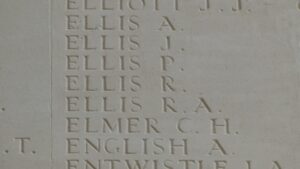
Tom Ellis, Lance Corporal, 27970, Royal Welsh Fusiliers. Tom was born at Birmingham in 1896, the son of William and Jane Ellis. The family had resided at Birmingham for several years prior to Tom’s birth, but by 1914 were back at their native Taliesin, residing at Birmingham House. Tom resided at 12, Porchester Road, Bayswater prior to the war, and enlisted at Holborn, London into the 16th Battalion, Royal Welsh Fusiliers, which was attached to 115 Brigade, 38th (Welsh) Division. On 2 December 1915 the battalion moved to France, and the entire Division moved to the Fleurbaix sector, where it was initiated into trench warfare. During June 1916 the Division marched south to the Somme, and on 7 July 1916 attacked Mametz Wood. The initial attack failed, and it was three days later, on 10 July, that a fresh attack was mounted. Tom was killed at Mametz Wood on 11 July 1916, aged 19. He is buried at Dantzig Alley British Cemetery, Mametz, France.
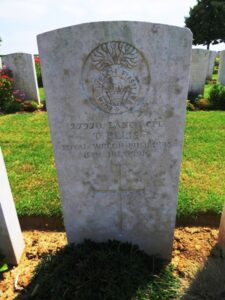
James Evans, Private, South Wales Borderers. James cannot presently be identified.
Richard Jenkin Isaac, Private, G/68553, Queen’s Royal West Surrey Regiment. Richard was the son of David Evans Isaac and Mary Isaac, of Penygraig, Taliesin. He resided at Balham, Surrey prior to enlisting at Putney into the Queen’s Royal West Surrey Regiment. Richard was posted to France at some time after 1916, attached to the 7th Battalion, Queen’s Royal West Surrey Regiment. The battalion was attached to 55 Brigade, 18th (Eastern) Division. In March 1917 the Division followed the German Retreat to the Hindenburg Line, and in May took part in the Battle of Arras. July 1917 saw the Division at Ypres, where they fought throughout the Third Battle of Ypres. In 1918 the Division was stationed south of the Somme, and was hit by the German Spring Offensive, which was launched on 21 March 1918. They fought at the Battle of St Quentin, and suffered terrible casualties, and then took part in the Battle of the Avre and the Actions of Villers-Brettoneux. On 8 August 1918 they formed part of the force which attacked the German positions around Villers Brettoneux, south of the Somme Valley, during the Battle of Amiens, and then took part in the great push by the Allies towards the Hindenburg Line. Richard was killed at the Battle of Épehy on 18 September 1918. He was 19 years old, and is commemorated on the Vis-en-Artois Memorial, France.
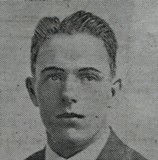
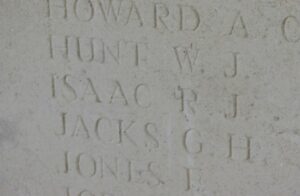
William James, Pioneer, 159319, Royal Engineers. William was the son of David and Mary James, of 17, Pencae, Taliesin. He originally enlisted at Aberystwyth into the South Wales Borderers, but was transferred to the 5th Battalion Special Brigade, Royal Engineers, which was a Special (Gas) Company. The Battalion was a Stokes mortar unit, attached to the Fourth Army. The Battalion was on the Somme in the summer of 1916, where it was to provide support for the forthcoming Battle of the Somme. William was killed during the build up to the battle, probably whilst moving equipment into place. He was 22 years old, and is buried at Hebuterne Military Cemetery, France.
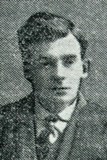
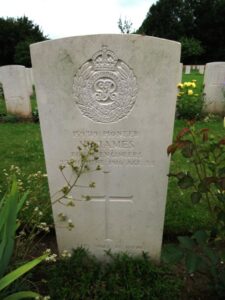
William Jenkins, Gunner, 186789, Royal Garrison Artillery. William was the son of John and Margaret Jenkins, of Mount Pleasant, Llangynfelyn. He was a miner prior to enlisting at Merthyr into the Royal Garrison Artillery and was posted to Gibraltar to join the 9th Company, Royal Garrison Artillery, which was attached to Northern Command. William took ill towards the end of the war, and died in Gibraltar Military Hospital on 12 October 1918. He is buried in Gibraltar (North Front) Cemetery. (The memorial states South Wales Borderers).
William Basil Loxdale Jones, MID, Flight Lieutenant, Royal Naval Air Service. William was born at Holy Trinity, Brompton, London on 16 February 1890, the son of the Bishop of St. Davids, William Basil Jones, and of his wife Anne Jones, nee Loxdale. The family had lived at Taliesin for several years, prior to moving to the Bishops Palace at Abergwili, Carmarthen. William served as an Observer in the Royal Naval Air Service, attached to 6 Wing, which was based in the Mediterranean. William was killed whilst flying as an Observer on patrol in the Adriatic on 7 January 1918, when his aircraft was lost at sea. He was 28 years old, and is commemorated on the Chatham Naval Memorial, Kent.
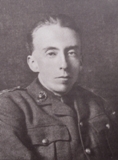
Humphrey Taylor Lewis, Sergeant, 18540, Royal Garrison Artillery. Humphrey was born at Corris in 1875, the son of Richard and Elizabeth Lewis. He had served during the Boer war, and in India prior to the outbreak of the Great War, when he was posted to the 172nd Siege Battery, Royal Garrison Artillery, which moved to France on 12 September 1916. Humphrey was wounded at the Third Battle of Ypres, and died, aged 44, on 15 September 1917. He is buried at Lijssenthoek Military Cemetery, Belgium.

Isaac Lloyd, Private, 28289, South Wales Borderers. Isaac was the son of Isaac Lloyd, of Talybont, and the husband of Elizabeth Lloyd, of Tynant Cottage, Llanafan, Crosswood. He enlisted at Aberystwyth into the South Wales Borderers, and was posted to the 1st Battalion, South Wales Borderers, which was attached to 3 Brigade, 1st Division. The Division had been in France since the outbreak of war, taking part in the retreat from Mons to the Marne, and fighting at First Ypres. The following year saw them in action again at the Battle of Aubers, before moving South to Loos, where they fought during the Battle of Loos, and the action at the Hohenzollern redoubt. During the summer of 1916 the Division moved south to the Somme, where they fought during the opening of the Somme Offensive at the Battle of Albert, then at Bazentin, Pozieres, Flers-Courcelette and Morval. They followed the German retreat to the Hindenburg Line in early 1917, and were then briefed for an operation on the Flanders Coast, and moved there during the summer of 1917. When the Third Battle of Ypres stalled in the mire, the Division was recalled to Ypres, where they fought at the Second Battle of Passchendaele. Isaac was killed in action here on 10 November 1917. He was 28 years old, and is commemorated on the Tyne Cot Memorial, Belgium.
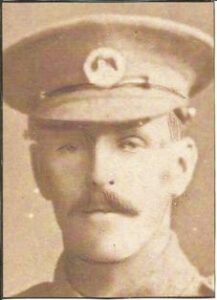
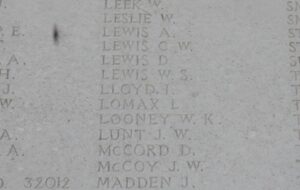
Thomas Lloyd, Guardsman, 1623, Welsh Guards. Thomas was born at Ystrad Rhondda in 1896, the son of Isaac and Margaret Lloyd. His parents were from Llangynfelyn, and prior to 1911 had returned home, living at Cefn Villa, Talybont. Thomas enlisted at Aberystwyth into the 1st Battalion, Welsh Guards, joining the battalion in France on 1 November 1915 at Loos, where it was attached to the 3rd Guards Brigade, Guards Division. In July 1916 the Division moved to the Somme, where they fought at the Battle of Flers-Courcelette, and then at the Battle of Morval, capturing Lesboeufs Village. They remained here for the winter, and in March 1917 took part in the advance caused by the German Retreat to the Hindenburg Line. Later that year they moved north to Ypres, where they fought at the Battle of Pilckem, and then at the Battle of the Menin Road, Battle of Poelcapelle and the First Battle of Passchendaele. November saw them move south again, where they took part in the Battle of Cambrai. They remained in the area over the final winter of the war, and were still in positions around Gouzeaucourt when Thomas was wounded. He died of his wounds on 11 March 1918, aged 22, and is buried at Duisans British Cemetery, Etrun, France.
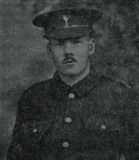
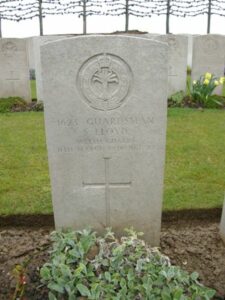
Morgan Morgans, Sailor, Mercantile Marine. Morgan was born in 1889, the Son of David and Mary Morgans, of Gogerddan House, Ynyslas, Borth. He served with the Mercantile Marine aboard the SS Penvearn. On 1 March 1918, Penvearn was 15 miles from South Stack, Anglesey when she was torpedoed and sunk by the German submarine UB-48. Morgan was 29 years old when he died that day, and he is commemorated on the Tower Hill Memorial, London.
David Lewis Richards, Private, 46064, Royal Welsh Fusiliers. David was born at Llangynfelyn in 1887, the son of Jane Richards. David later resided with his mother at Grove House, North Road, Aberystwyth. He enlisted at Aberystwyth into the army on 10 December 1916, and was posted to France on 7 October 1916, joining the 14th Battalion, Royal Welsh Fusiliers, which was attached to 113 Brigade, 38th (Welsh) Division. David joined the battalion at Boesinghe, and was posted to D Company. He had only been in Belgium a matter of weeks, when he was shot in the head whilst in the front line. David died at Proven on 27 October 1916 aged 19, and is buried at Mendinghem Military Cemetery, Belgium.
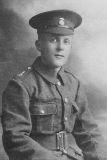
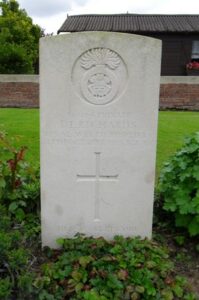
Evan Richard Roberts, Air Mechanic 2nd Class, F/14506, Royal Naval Air Service. Evan was born on 12 September 1886, the son of David and Elizabeth Roberts, of Taliesin. He lived in London prior to the war, and married May Monks on 21 December 1912. The couple set up home at 84, Springfield Avenue, Easington, Banbury, Oxon. Evan enlisted into the Royal Naval Air Service, becoming an Air Mechanic. He was based at H.M.S. President II in London, when he died on 7 July 1917. Evan was 31 years old, and is buried at Abney Park Cemetery.
George James Vearey, Private, 29610, South Wales Borderers. George was born in 1884, the son of James and Mary Vearey, of 17, Northgate Street, Aberystwyth. He married Margaret Ann Rees, of Half-Way Inn, Trerddol, Glandyfi at Aberystwyth in the summer of 1917, just before embarking for France, joining the 1st Battalion, South Wales Borderers. The battalion was on the Flanders Coast attached to 3 Brigade, 1st Division, and was preparing for an assault along the coast. After the Third Battle of Ypres had ground to a halt in the mud, the coastal operation was called off, and the 1st Division moved to Ypres. George was killed in action here during the Second Battle of Passchendaele, on 10 November 1917. He was 33 years old, and is commemorated on the Tyne Cot Memorial, Belgium.
